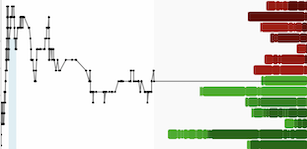For the brief period when the US dollar fell out of favor (just a few days), rival currencies had their moment. Now? Not so much. So, what changed?
Over the weekend, President Donald Trump signed a controversial executive order imposing tariffs on America’s biggest trade partners. The order slaps tariffs ranging from 10% to 25% on imports, with more potentially on the way.
China faces 10% levies on all imports, while Mexico and Canada are hit with steep 25% import duties — except for Canadian oil and energy products, which are taxed at 10%.
Following this news, the US dollar index surged at the start of the trading week, gaining 2%.

The move sent shockwaves through the forex market, rattling major currencies. The EUR/USD pair opened Monday’s session with a sharp 1.1% drop, hitting $1.0240. Meanwhile, USD/JPY jumped 0.6% to 155.60, and GBP/USD gapped lower to $1.2250.

The immediate reaction to these disruptive tariffs showed investors rushing to the safety of the US dollar. Why? Tariffs act as a shield for domestic businesses by making imported goods more expensive. But who’s paying that extra cost?
American companies are. The added 10% and 25% makes their products more expensive for US consumers, strengthening the dollar in the short term. However, this shift could bring bigger problems — trade wars, supply chain disruptions, and, most importantly, higher inflation.
A few phone calls with Mexico and Canada temporarily paused the import duties, boosting gold prices to a new record high above $2,830 per ounce.

However, the US made no such concession for China. The 10% tariff on Chinese goods officially took effect this week, meaning all imports from China will now be taxed.
China didn’t sit idle. It retaliated with a 15% tariff on select US imports starting February 10. The new tax will apply to coal and liquified natural gas, while a 10% tariff now affects American crude oil, farm equipment, and certain trucks and cars.
And just like that, markets were dragged back into the chaos of tariffs, trade wars, and geopolitical tensions. Yet, tariffs aren’t the only concern — markets are bracing for a volatile week ahead, with the nonfarm payrolls report set for release on Friday. Buckle up.



